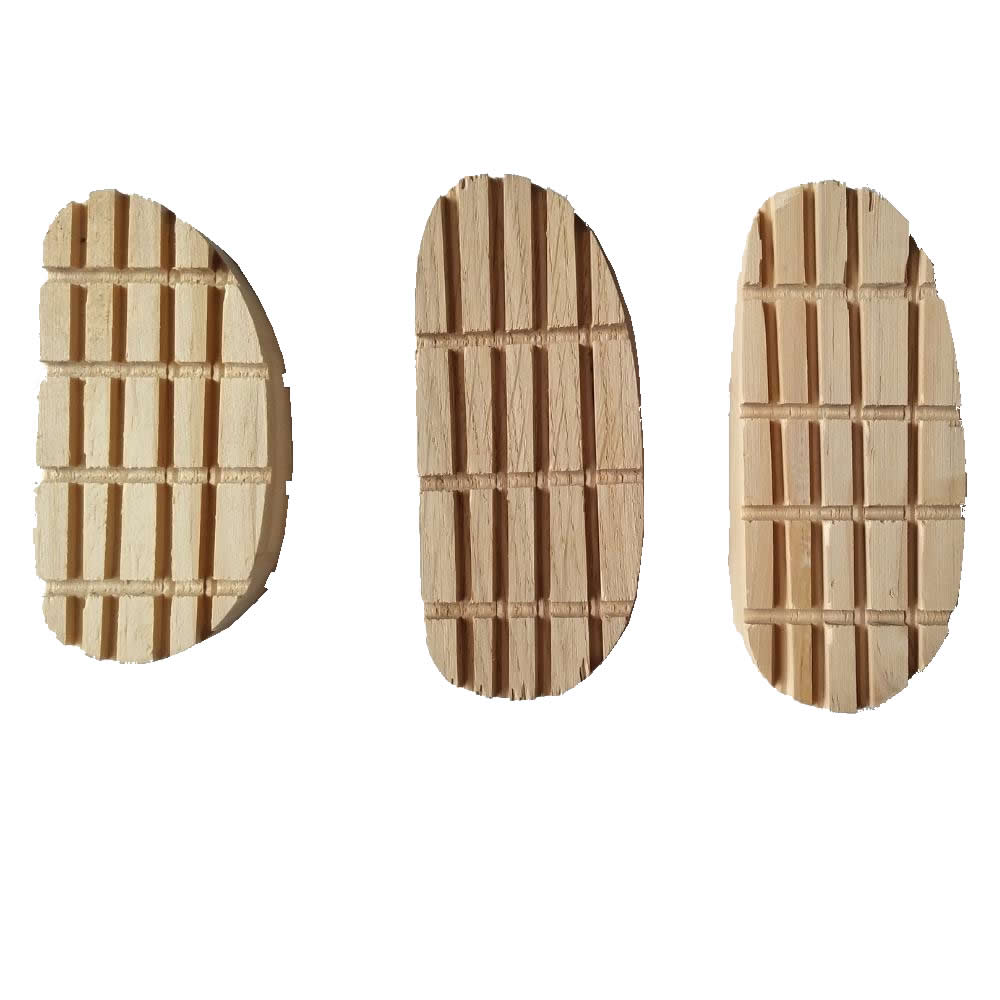- 04
- Jul
Horse Hoof Block, Hoof Block, Wooden Hoof Blocks

Horse Hoof Block: A Versatile Tool for Equine Hoof Care
Introduction: The horse hoof block, also known as a hoof block or wooden hoof block, is an essential tool in equine hoof care. This simple yet effective device plays a crucial role in addressing various hoof-related issues and providing relief to horses. In this article, we will explore the advantages, necessity, applications, and important considerations associated with horse hoof blocks.
Advantages of Horse Hoof Blocks:
- Pain Relief: Horse hoof blocks are primarily used to alleviate pain and discomfort in horses suffering from conditions such as laminitis, abscesses, or injuries. By elevating the affected hoof, the block redistributes weight-bearing forces, reducing pressure on sensitive areas and promoting healing.
- Promotes Healing: Wooden hoof blocks assist in the healing process by improving blood circulation, reducing inflammation, and protecting the affected area from further trauma. By providing support and stability, the blocks allow damaged tissues to regenerate and recover.
- Corrective Purposes: Horse hoof blocks are also employed in corrective shoeing practices. They can be used to compensate for imbalances, correct angular limb deformities, or assist in hoof growth and development. By adjusting the hoof’s position, the block aids in restoring proper alignment and function.
Necessity of Horse Hoof Blocks:
- Versatility: Hoof blocks are an indispensable tool for equine veterinarians, farriers, and horse owners alike. Their versatility allows them to be used in a wide range of hoof conditions, regardless of the horse’s age, breed, or discipline. From performance horses to companion animals, hoof blocks provide essential support.
- Non-Invasive Solution: Compared to more invasive treatments, such as surgery, hoof blocks offer a non-intrusive and cost-effective alternative. They can be easily applied and removed, minimizing stress and discomfort for the horse. Additionally, hoof blocks are reusable and can be utilized for multiple cases, making them a practical choice.
- Preventative Care: Even in horses without apparent hoof issues, regular use of hoof blocks can be beneficial. By providing periodic relief and support, these devices contribute to the overall hoof health and can help prevent future problems from developing.
Applications and Usage Guidelines:
- Laminitis Management: Laminitis, a painful inflammation of the laminae within the hoof, requires immediate attention. In such cases, horse hoof blocks are used to elevate the affected hoof, reducing pressure on the inflamed tissues. Consultation with a veterinarian or an experienced farrier is essential to determine the appropriate block height and duration of use.
- Abscess Treatment: Hoof abscesses can be excruciating for horses. Applying a hoof block to the unaffected hoof helps to relieve pressure, allowing the horse to bear weight more comfortably. It is crucial to monitor the horse’s progress and consult with a professional to ensure appropriate treatment.
- Corrective Shoeing: When addressing structural or gait abnormalities, hoof blocks are utilized in conjunction with specialized shoeing techniques. Experienced farriers work closely with veterinarians to design a customized plan to improve hoof balance, correct limb deviations, and promote soundness.
Important Considerations:
- Professional Guidance: The application and usage of hoof blocks should be done under the guidance of an experienced farrier or equine veterinarian. They possess the necessary expertise to assess hoof conditions accurately and determine the appropriate use of hoof blocks.
- Regular Inspection: When using hoof blocks, it is vital to regularly inspect the horse’s hooves for signs of discomfort, pressure sores, or any adverse reactions. Adjustments or changes to the block height may be necessary based on the horse’s progress.
- Timely Removal: Hoof blocks should not be left on for an extended period. Consultation with a professional is crucial to determine the appropriate duration for using the blocks, ensuring that they are removed at the right time to prevent any unintended consequences.
Conclusion: The horse hoof block is a valuable tool in equine hoof care, offering pain relief, promoting healing, and facilitating corrective measures. Its versatility, non-invasive nature, and preventive benefits make it an indispensable component of hoof care practices. However, proper application, expert guidance, and regular monitoring are crucial to ensure the optimal use of hoof blocks for the well-being of horses.
best hoof block glue, hoof blocks for sheep, hoof block for sheep, hoof block cost, hoof block horse, horse hoof block, hoof problems in pigs, wooden hoof blocks, tp hoof block, foot buffing block, hoof block, wooden cow hoof blocks, hoof block for cows, wooden hoof blocks, hoof tite block adhesive, hoof block, hoof blocks for cows, how to cut pig hooves, how to use hoof block, horse hoof block, hoof block application, cow hoof block, hoof block zone
